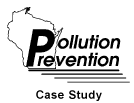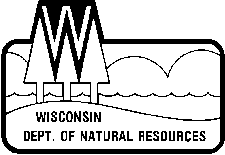
APV Crepaco
Machining Fluid Waste Reduction Program
The team members made use of a number of educational opportunities, including vendor videos and UW-Extension teleconferences, to learn more about coolant management and waste reduction. They put together a list of possible solutions to the machining fluid problems and surveyed other employees for both additional suggestions and to encourage project ownership by non-team members. Based on their research, the team implemented a number of waste reduction strategies and used outside vendors and the UW-Extension Solid and Hazardous Waste Education Center to review progress and make additional recommendations. These strategies include:
- Using best available fluid formulations to extend fluid life
- Reducing fluid formulations to two and thus simplifying recycling
- Improving mixing water quality to avoid fluid degradation
- Adding external sumps and reservoirs with oil skimmers to maintain fluid quality
- Creating a machine clean-out and a fluid recycling schedule to eliminate equipment contamination and unnecessary fluid disposal
- Improving ease of fluid level monitoring to simplify fluid maintenance and minimize unnecessary fluid replacement
- Training machinists to assess and maintain fluid quality
- Tracking fluid waste generation to identify problems
- Labeling materials to avoid cross contamination
- Bringing the fluid recycling equipment up to operating specifications
- Developing standard operating procedures for fluid use, recycling, and disposal.
The team conducted employee training sessions to ensure that the new fluid management program would be accepted by the machinists and integrated into normal duties. The team ensured the long-term viability of the fluid management program by: calculating financial gains and reduced waste resulting from their efforts; making a presentation to company employees and management to explain the program and underscore the importance of their accomplishments; and making recommendations for ongoing management and machinist support of the new fluid management program.
Feedstock
Soluble oil type grinding and cutting fluids
Waste
Spoiled coolant and waste machine cleaner. 50,000 gallons/year of machining fluid was
being disposed of as hazardous waste.
Disposal
Hazardous waste was removed by a hazardous waste management company.
Pollution Prevention Process
Feedstock
Synthetic grinding and cutting fluids
Waste
24,000 gals/year of used coolant. New fluid purchases have been reduced by over 50%.
Disposal
Hazardous waste is removed by a waste management company. Waste machining fluid disposal
has been reduced by 50%.
Capital Costs
$8,000 to purchase coolant equipment to upgrade existing equipment.
Operation/Maintenance Costs
No significant costs.
Payback Period
Less than one year.
100 South CP Avenue
Lake Mills, Wisconsin 53511
414/648-8311
University of Wisconsin Extension
Solid and Hazardous Waste Education Center
Milwaukee area: 414/475-2845
Remainder of state: 608/262-0385
Pollution Prevention
Information Clearinghouse
Wisconsin Department of Natural Resources
Hazardous Waste Minimization Program
608/264-8852, 608/267-9523 or 608/267-3763
 |
PUBL-TS-036 95 |